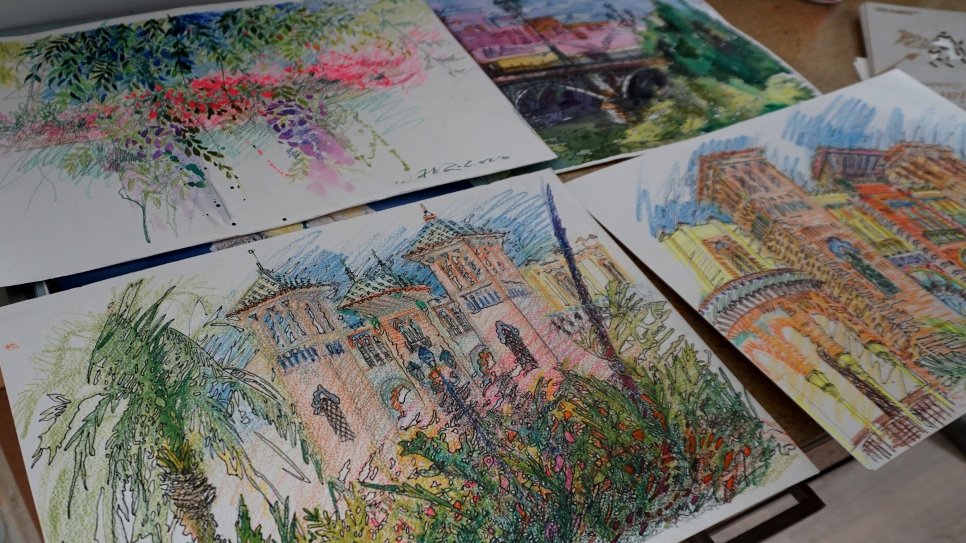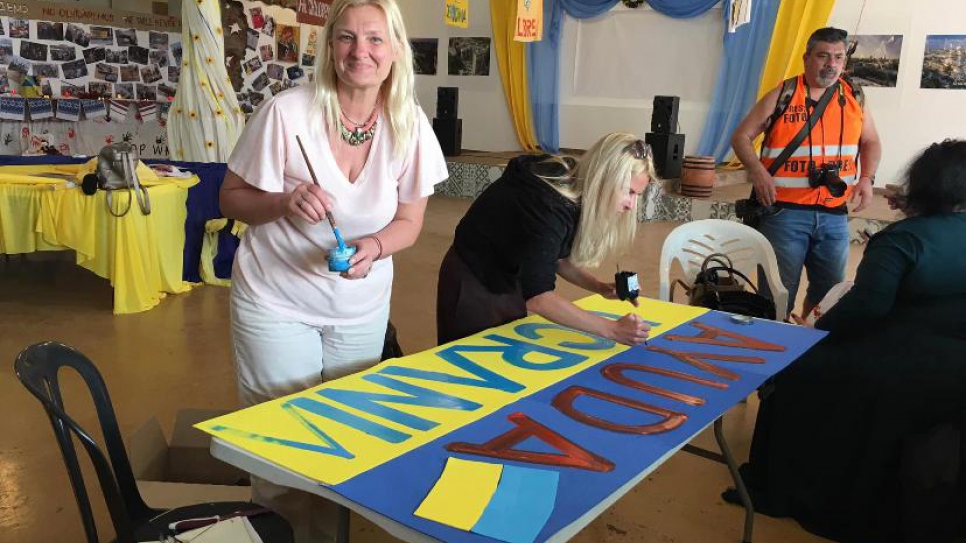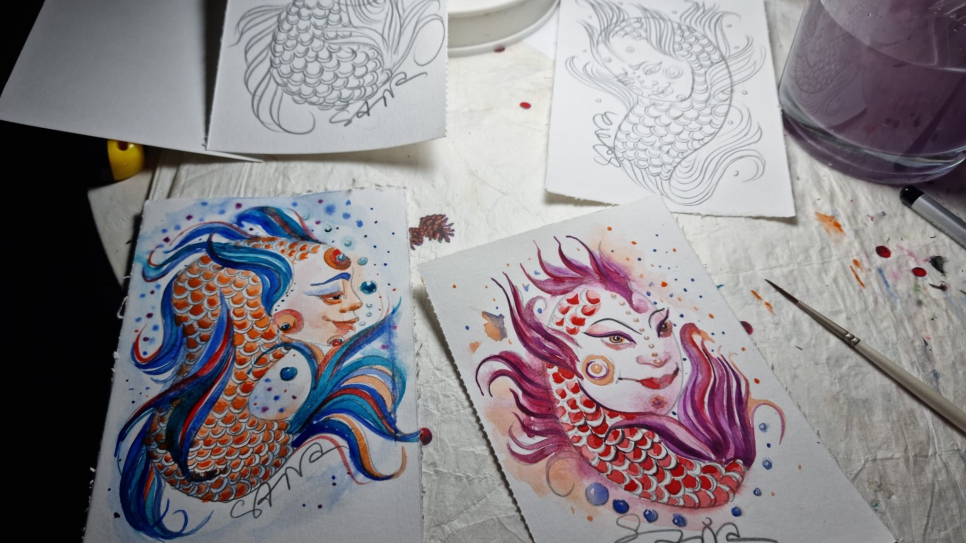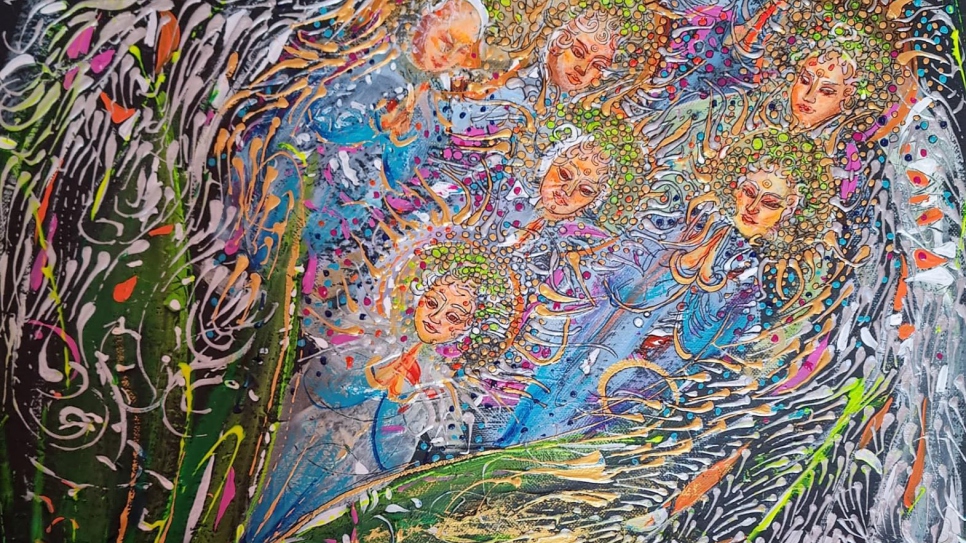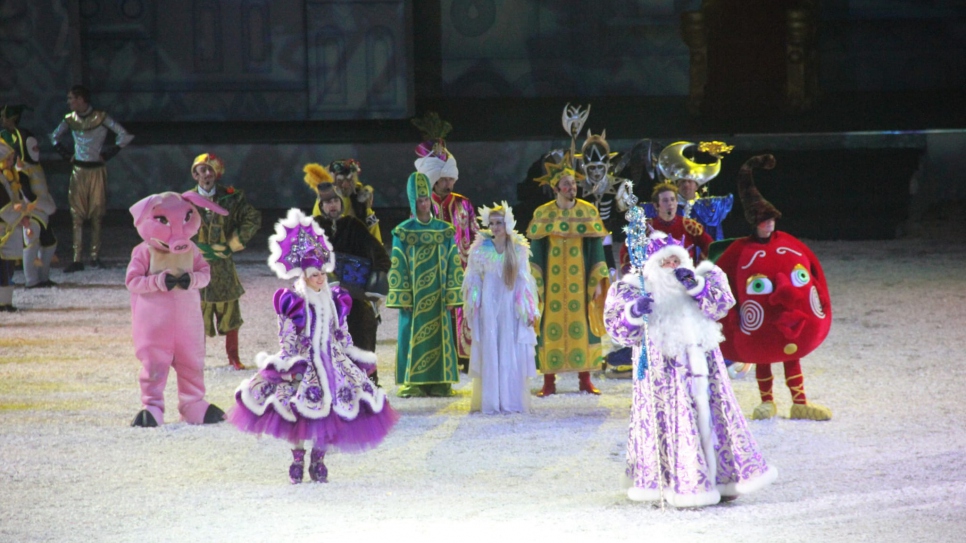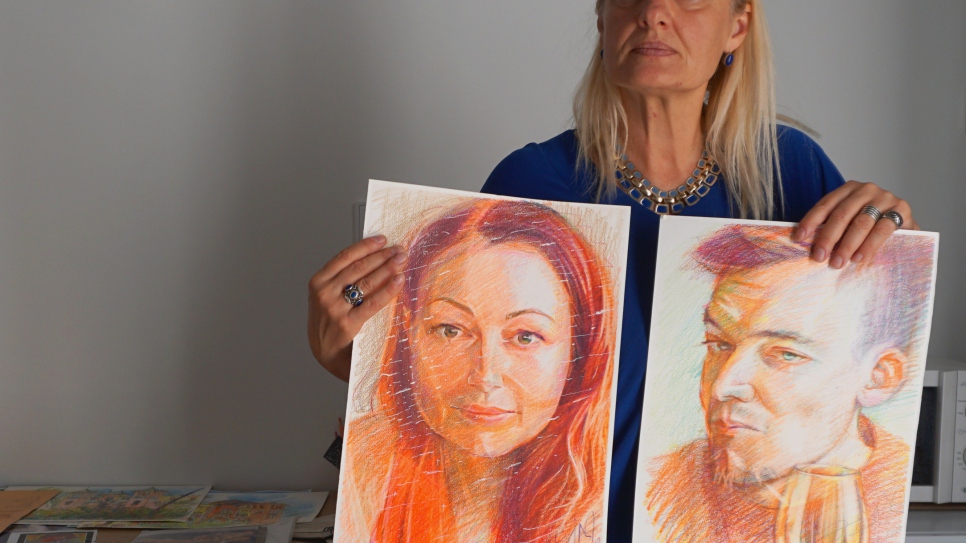Ukrainian refugee artist finds inspiration in southern Spain

Ukrainian refugee artist finds inspiration in southern Spain
“For me, it is very important to meet other artists, participate in exhibitions, and communicate with Spaniards to continue learning the language, culture, and lifestyle. I haven't found a job yet, but I like painting and handicrafts,” this Ukrainian artist tells us as we walk around Seville, where she has been living with her mother for the past three months.
Oksana was living in Spain, in Malaga, when the war broke out in Ukraine at the end of February 2022, but her 74-year-old mother was still in Kharkiv, her hometown.
Kharkiv, in northeastern Ukraine, was heavily bombed, and her mother was forced to flee for her safety like thousands of displaced persons from the region. “It was a long and hard journey for her because of her age and health condition,” explains Oksana, now happy to reunite with her mother in Spain.
Given the impossibility of returning to Ukraine, she went to the Center for Reception, Attention, and Referral (CREADE) in Malaga, where she was in contact with the UNHCR team and received advice on the possibility of applying for the temporary protection status granted to Ukrainian refugees by the Spanish authorities. Documented with this status and without financial means, mother and daughter now live in a refugee reception center run by CEAR in Seville, where they receive accommodation, food, and psychosocial support.
From theater to painting
Oksana studied at the Kharkiv State Academy of Design and Arts and has spent almost half her life involved in theater and show production.
Three decades of experience in which she has done almost everything: costume design, three-dimensional construction of characters, creation of scripts and scenery, props… She has also been the artistic director of the theater department of the National University of Arts Kotlyarevsky in Kharkiv and of the creative studio “Life-Art Studio.”
Now, after more than 20 theatrical productions, fashion collections, New Year's Eve events, musicals, puppet shows, and various exhibitions, this Ukrainian refugee woman has found in painting a new source of inspiration.
In Spain, Oksana has been able to rediscover her most creative side and explore new artistic languages, especially those related to painting.
“I’m still looking for my own language of expression. I don't have many materials, but I have paper, watercolor, and pencils,” she tells us as she shows us some of her most recent drawings, sketches made during a sporting event where she joined a group of sketchers who meet regularly to capture emblematic corners of Seville, her new workspace.
She has also had the opportunity to exhibit some of her works in a solidarity exhibition in Fuengirola (Malaga), where the funds raised were sent to Ukraine.
Oksana recognizes that integration is not always easy for any refugee because of language barriers, the difficulties in finding a job, but, in her mother’s case, because of age or trauma after the war: "Changing your home and your country for older people is much more difficult.”
“I would like to sell my paintings and help.”
In the last few months, Oksana has learned to enjoy the little moments and to value what she left behind. "I would like to find my place and be useful to the country where I was born; I would like to be able to sell my paintings and help," she confesses while showing us some of her canvases.
In those pieces, tradition, and folklore, myth and reality coexist. Portraits of her own family alternate with dreamlike scenes and Andalusian folklore—just a sample of how art knows no borders or rules.
“My education and experience have led me to have my own pictorial and graphic style, thanks to which I can show important themes to me as an artist, woman, philosopher, dreamer, person... Each of my works unfolds a small show. I use materials and tools that allow me to work on small details,” she explains.
Perhaps that is why it is not surprising that her primary artistic reference is Pablo Picasso, the father of cubism and one of her sources of inspiration because “he is a revolutionary and creator of a new path in art.” Classics such as Pavel Filonov or the symbolist Mikhail Vrubel are also among the references that have marked her career.
“I love details,” she acknowledges, as she recalls with emotion her first and only visit to the Prado Museum in Madrid and how impressed she was with El Bosco and his detailed figurations full of fantasy.
With her mother safely in Spain, this Ukrainian artist is now starting a new stage, trying to get her degree recognized, find a job and find herself again, learning new skills and tools that will allow her to be self-sufficient and to continue enjoying art.


